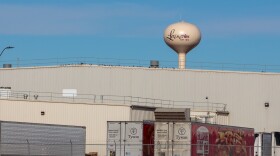-
Industry experts say interest in protein consumption among consumers is likely driving growth in whole milk sales. But the trend may be a blip in the ongoing decline in U.S. milk consumption.
-
Farmers across the central U.S. have navigated a myriad of challenges this year, including low crop prices and federal funding cuts.
-
American agriculture relies on foreign workers, and that workforce is already stretched thin. With Trump’s immigration crackdown set to expand next year, some farmers fear that workers will be even harder to find, and they want Trump to do something about it.
-
Producers across the central U.S. are facing high input costs as the trade war puts crop markets in an uncertain position. Agriculture economists say they’re watching tariffs and the cattle industry — which has boosted income for some farmers.
-
Winter holiday festivals have become a regular way to grow revenue for America’s smallest towns. And with more people shopping online, those events are key to pulling people away from their screens and into stores.
-
Equine herpesvirus can spread easily and debilitate an animal. A recent outbreak canceled several events across the country, but animal health authorities say cases seem to be easing.
-
The announcement that Tyson would shutter a massive beef processing plant in Nebraska was the first such closure in more than a decade. Beef processors are running at lower capacity, as the U.S. cattle herd size is the smallest it's been since the 1950s.
-
The massive tax and spending law signed in July halts a federal incentive for residential solar, and homeowners and installers are hurrying to complete projects before the end of the year. Industry experts say there are other ways to cut costs like "group buys."
-
At grassland sites worldwide, including the Midwest and Great Plains, scientists simulated extreme drought conditions. The study provides a far-reaching and systematic look at the effects of drought severity.
-
Most of the package is earmarked for row-crop producers. It aims to help farmers – especially those who grow soybeans – balance out losses from high costs and a trade war with China.

Play Live Radio
Next Up:
0:00
0:00
Available On Air Stations










